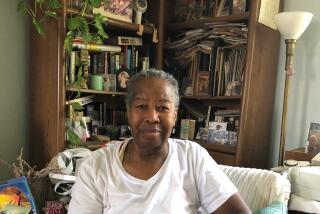New Delhi Heart Center Fulfills Dreams
- Share via
NEW DELHI — In 1969, like thousands of other bright, young Indian professionals, Naresh Trehan went abroad to further his education.
In less than two decades, he became one of the top heart surgeons in New York City, with an income of $1.5 million a year, an apartment on Fifth Avenue, a beachfront house on Long Island and two cars in the garage.
He wanted to come home, to bring his wife and two children back to their own country, but his professional achievements and aspirations had reached too high. During exploratory trips back to India, he found no place where he was willing to work.
So, he set out to fulfill a new dream: a world-class heart hospital in India, equipped with state-of-the-art computers and staffed with Indians who had set career goals that their country could not accommodate.
His Indian dream became a reality when the 170-bed Escorts Heart Institute and Research Center opened in New Delhi in mid-September.
“It’s like climbing a new mountain,” the 42-year-old Trehan said. “It’s a passion for me to come back and train others.”
In New York, Trehan performed heart-bypass operations and heart transplants. He was director of cardiovascular surgery at the Manhattan Veterans Administration Hospital, and he remains an assistant professor of surgery at New York University.
In some years, at least 10% of his patients were fellow Indians. Trehan reasoned that wealthy Indians who go abroad for heart surgery would pay comparable prices for the same quality of treatment at home--while saving the cost of air fare and the hassle of travel.
Their fees would help offset free or subsidized treatment for others.
Trehan enlisted a wealthy industrial family to help bankroll the new hospital. The start-up cost was budgeted at $20 million and, according to Trehan, that figure will probably rise. News of the project spread by word of mouth among Indian doctors working in the United States and Western Europe.
“I was always thinking that we could do it here,” said Dr. Sunil Sharma, who quit a job at George Washington University Hospital in Washington, D.C., to become the Escorts center’s chief bacteriologist and infection-control officer.
Sharma, 33, declined to disclose his present salary but said it is about a tenth of what he made in Washington.
The main attraction, he said, was the chance to live and work among his own people.
“The standard of living is so high abroad, but we are more emotionally attached to our patients here,” Sharma said. “In the States, everybody is afraid of malpractice (suits), but here we treat from the core of our hearts.”
Of the 30 doctors now on staff at Escorts, 12 have returned from abroad.
There were more mundane problems to deal with in establishing the new heart center.
“This hospital is going to be 100% fly-proof,” Trehan declared as he strode across the polished-stone lobby to the front door, where a powerful, downward draft of air from the ceiling thwarts entry of flies and mosquitoes. Flies seem to be a standard part of hospital life in India.
It is also common for families to camp in the courtyards and hallways of hospitals, cook meals and try to keep track of a noisy assortment of half-naked children.
At J. P. Narain Hospital, one of New Delhi’s largest, it is possible to walk in off the street and wander through corridors and wards without being questioned. People lie on the floors, and barefoot women in tattered saris flail the hallways with twig brooms that stir up dust without sweeping it away.
At the Escorts center, security guards check visitors for passes.
“We are training our staff to a totally different level,” Trehan said. “And for the first time, we have introduced a housekeeping service similar to that in hotels.”
A formula was reached with the government under which 40% of all outpatients and 10% of all inpatients will be treated free. About 25% of the rest will be given subsidized rates, while the rest will pay full costs.
Trehan, as the center’s executive director, will still perform surgery and plans to work for free if patients can’t afford his bill. The other doctors had to agree to do the same.
One of the hospital’s first patients was Santosh Rani Arora, a 46-year-old widow. A bout with rheumatic fever 22 years ago left her with a severe aortic disease that causes her heart valves to leak.
Surgery in 1970 and 1983 failed to solve the problem, according to her sons Sunil and Anil, both government civil servants.
The sons expressed concern about being able to afford Escorts’ charges, but Trehan told them they could pay $352 for an angiographic test that normally would cost about $463.
Later, after the family left, Trehan said he expected to perform surgery on Arora.
“I can forgo my fee,” he said. “I expect that we can help them out with the rest, and they can come up with whatever they can so we can recover the cost of some of the consumables (supplies and medicine).”
More to Read
Sign up for Essential California
The most important California stories and recommendations in your inbox every morning.
You may occasionally receive promotional content from the Los Angeles Times.












